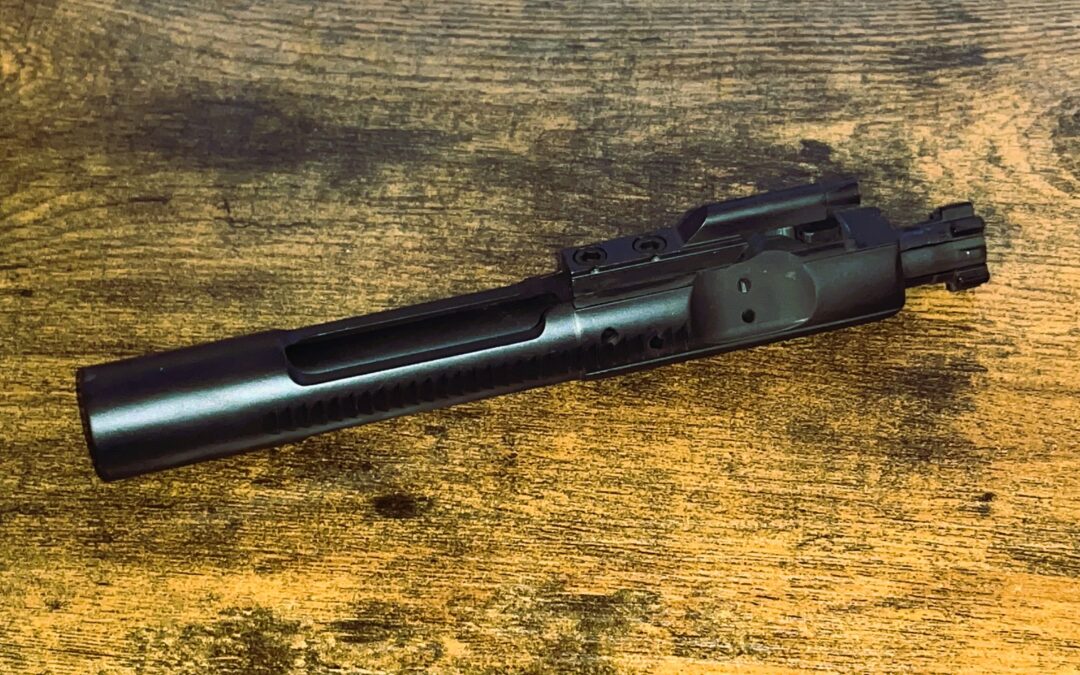Selecting the right bolt carrier group (BCG) for your AR-15 rifle is key to achieving optimal performance from your weapon. The BCG is one of the most crucial components of any AR-15, and making an educated decision when choosing a BCG can save you time and money in the long run. Here is an overview of various BCGs and factors to consider when assessing each option to make an informed, efficient selection.
The Bolt Carrier Group
Here are all the components that make up the BCG:
- Carrier– Houses the bolt, allowing and allowing the user to discharge rounds from the weapon. The carrier must be periodically inspected to ensure that the screws attaching to the gas key are tight and secure.
- Bolt– Plays a crucial role in guiding the bullet into the chamber, extracting the spent case, and ejecting it once you’ve fired the weapon.
- Gas Key– Commonly referred to as the “bolt carrier key,” this crucial part directs gas flow from the gas tube into the bolt carrier. It must be tightly fitted to ensure a proper seal is maintained.
- Firing Pin– when a trigger is pulled back and released, the firing pin is propelled forward and strikes the cartridge’s primer. This starts the combustion and propelling process in the chamber.
- Cam Pin– It serves many functions, such as anchoring the bolt to the bolt carrier, keeping the firing pin in line, and moving the bolt into the locked position.

Semi VS Full Auto BCGs
Full auto bolt carrier groups are now widely available, an increasingly popular component of many AR-15 builds. As the name suggests, they are designed to be compatible with fully automatic fire. However, it is essential to note that owning and using a full auto BCG does not make the firearm full auto, but it makes the whole assembly stronger to withhold against the strain of the full auto function. It does not affect the function of a semi-auto rifle. Compared to their semi-auto counterpart, M16 BCGs have an additional mass that can help enhance the cycling of your rifle and make for smoother firing.
Materials
Steel is often the preferred material for AR-15 bolt carrier groups due to its durability and heat resistance, making it ideal for withstanding wear and tear. It is also relatively more affordable than titanium or aluminum. Therefore, aluminum BCGs are lighter and are used when a low-mass option is desired, such as for shooting competitions. They perform exceptionally well with guns that have adjustable gas systems. Although much more expensive than steel and aluminum options, titanium BCGs have the advantage of being lighter while maintaining superior heat and pressure resistance.
Finishes
Parkerized (Manganese Phosphate) is a Mil-Spec coating that is widely used and well known for its corrosion resistance and durability. It remains one of the most affordable options for finishing AR-15 bolts. In comparison, Nickel Boron provides extreme corrosion resistance and low friction, making it simpler to restore its condition by wiping it down with a soft cloth. While Black Nitride, or QPQ, is not technically a coating but a thermal treatment process that enhances steel surfaces to make them resistant to corrosion and increases their longevity while reducing friction.
Skeletonized or Not
When choosing a skeletonized BCG over a non-skeletonized version for you AR-15 Build, you need to know what type of commitment you will make. While a lighter weight will be associated with a skeletonized BCG, you will need to tune your gas block and use appropriate ammunition. You may even need to tune your buffer and buffer spring to get the weapon to cycle appropriately.

